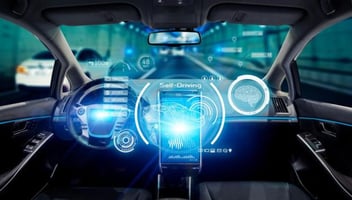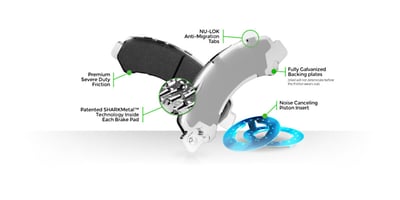The world of electric cars is rapidly gaining momentum and is set to revolutionize how we think...
Is 10 & 3, and Check Your Mirrors Going the Way of the Dinosaur?

The automotive industry has seen a significant change in the past decade, and the transition to electric vehicles (EV) has been one of the most revolutionary changes. Modern EVs are not just about clean energy; they have changed how we interact with our cars. One significant change has been replacing conventional rearview mirrors and basic safety features with advanced camera and infotainment options. As with any change, it is natural to question whether we are moving in the right direction or if we are losing something essential. This blog post will discuss the ongoing debate about the disappearance of rearview mirrors, blind-spot, and other safety checks while driving.

Back when we learned to drive, we were taught to keep our hands on the wheel at the 10 and 2 positions and to check our mirrors regularly. However, technological advancements have made driving a lot safer today. Now, we have cameras, sensors, and infotainment systems that can provide more information than mirrors could ever do. Tesla's Model Y features an OTA update that provides a blind spot camera when changing lanes, replacing the need to look over your shoulder. It is an excellent safety feature, but some of us who have been driving for years may need help to adjust to this new way of driving.
Aside from advanced cameras, infotainment systems have changed how we interact with our cars. Many EVs feature large screens in the dashboard that replace rearview and side-view mirrors. The screens display a live feed of the car's surroundings, providing a much larger field of view than conventional mirrors. Apart from that, the screens allow infotainment applications to run, and you can control your navigation, music, and even climate settings through the touchscreen.

While many see the transition from conventional mirrors to screens as a natural move, others worry about its impact on our interactions with cars. The side-view mirrors, for example, have been around for over a century, and it is challenging to imagine not having them. The same goes for people who have grown accustomed to checking mirrors and physical checks for blind spots. The new system may also become problematic when driving through high-glare lighting conditions, and this could potentially cause harm.
It is not just the disappearance of mirrors and basic checks that have some people worried; the introduction of self-driving features is also raising concerns. We are moving towards a future where people may not have to learn how to drive. Self-driving cars are not a new concept, but they are now closer to becoming a reality. This raises several questions, such as: how will new drivers be trained, and are we losing something essential about driving? Also, compliance with various safety standards and maintaining focused attention while driving would be a significant challenge with self-driving cars.

In conclusion, transforming cars from petrol to electric has opened up many new opportunities for innovation and improved safety features. As in the case of self-driving cars, there is still fear and uncertainty surrounding the future of driving. However, we must understand that technology can only progress with change. We must embrace these changes as they come and find ways to incorporate new technologies into our daily lives while maintaining a safe driving experience. Ultimately, the future of driving will depend on how we transition to these recent changes, and we need to ensure we do so safely and efficiently.
Pic Credit - Rear View Camera Ford Infotainment Tesla Autopilot Infotainment Pic


